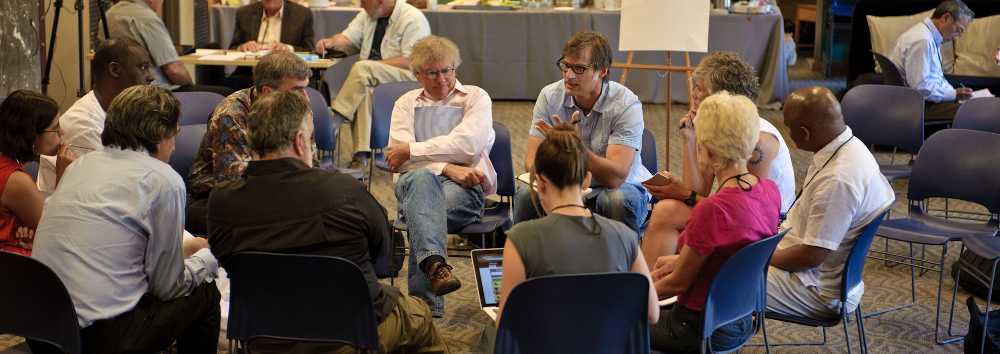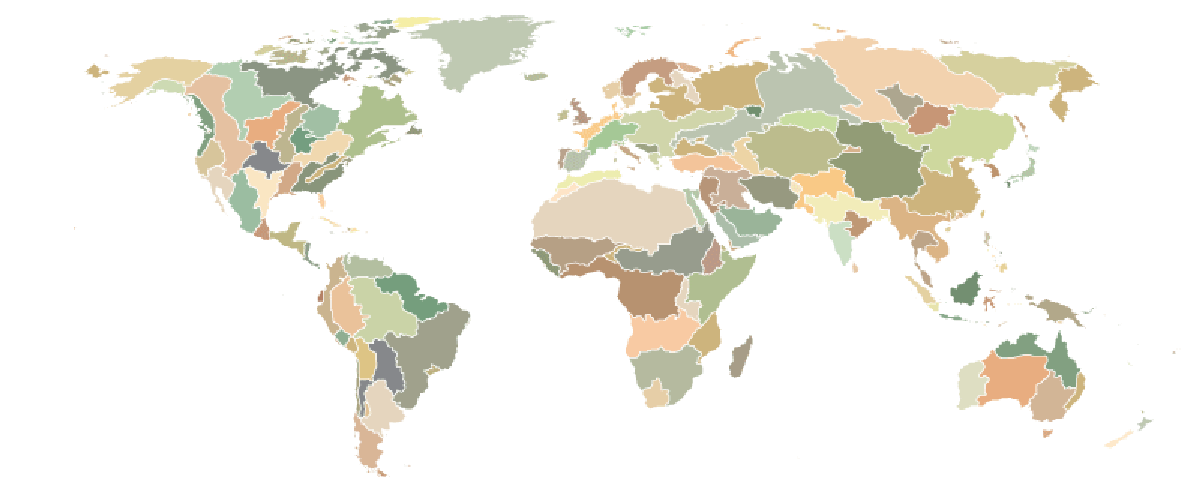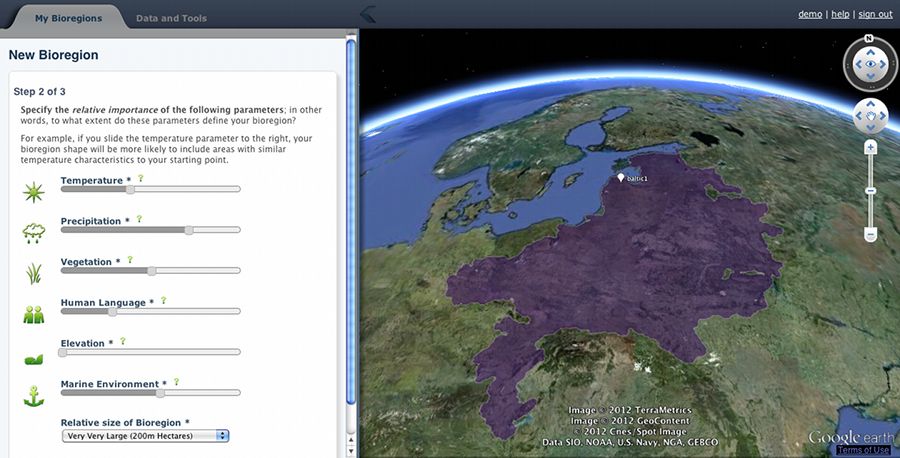Visualizing assets and vulnerabilities in bioregions around the world
Challenge
Historically, environmental variables such as temperature, precipitation and soil have played a key role in defining regions and shaping the lives of the people in them. But in the age of technology and globalization these fundamental realities are fading from public view. Knowledge about strengths and vulnerabilities of a given region -- what makes it uniquely competitive and resilient to systemic shocks, financial disruptions and global changes -- are often not known by the people who live there or being lost altogether.
But what is a region? Depending on your sense of place, what ecological and social characteristics you think are important, and what problems you are grappling with, regions might range in extent and scale from the village to the better part of a continent.
Ecotrust sought a way for people to explore the extent of their region and better understand the social and environmental attributes and vulnerabilities within it. With deeper knowledge people can begin to think about how to organize economic activity for resilience and leverage the natural competitive advantages of their region.
Approach
Using the Madrona framework, Ecotrust designed the Bioregion Discovery Tool to allow people to visualize regions at a number of scales based on a wide range of ecological and social characteristics. As Ecotrust convened a three-day gathering for 50 regional activists and change-makers from around the world in 2011, the tool was used by attendees to demonstrate the diversity and complexity of their respective regions, and as a way for attendees to compare, discuss and re-imagine their work with each other.
In addition to being able to create regions that are meaningful, the tool draws on global datasets compiled for the first time to report in real-time a region’s vulnerabilities including climate change, development pressure, water limitations, and food scarcity, among others. Putting this information to work in mapping relevant new regions allows us to re-examine the validity and effectiveness of existing national and other jurisdictional boundaries, and to imagine new institutions that will be better serve regions now and in the future.
Testimonials
Canada’s Ric Young and Finland’s Dr. Tero Mustonen enthusiastically defined the Bioregion Discovery Tool as “a vehicle for a community of regional actors committed to the well-being of people and place... it can include many dimensions of information, including the recognition of the link between local language and local landscape— embracing the fact that language is an integral part of an ecosystem”. A human and environmental rights leader from Manipur, India, noted that the tool’s datasets captured how many languages were spoken within his region, a piece of information which would be critical in a communications campaign, for example. A lead researcher at the New Economics Foundation in London, England, noted that with the addition of further datasets, this tool could enable an exploration of the characteristics of community wellbeing in different parts of the world.

Notable Features
- Model-driven bioregion creation. Users weight parameters and a model generates a bioregion feature for them.
- User-drawn bioregion creation. Users sketch their vision of what the
- Collaboration. Users are able to share regions they have created
- Reports. The ability to summarize and quantify in real-time the strengths and vulnerabilities of a given region from culture and language to natural hazards and vulnerability to climate change
- Social networking. Users are able to see other regions that overlap with theirs and the stories of others that are within their region, creating a powerful way for people to connect.
Technology
- Madrona framework
- Google Earth
- Grass GIS
- Starspan
Links
- Application
- http://bioregions.apps.ecotrust.org
- Source code
- https://github.com/Ecotrust/bioregion-discovery
Contact
For more information, contact Mike Mertens at - 503-467-0775.


